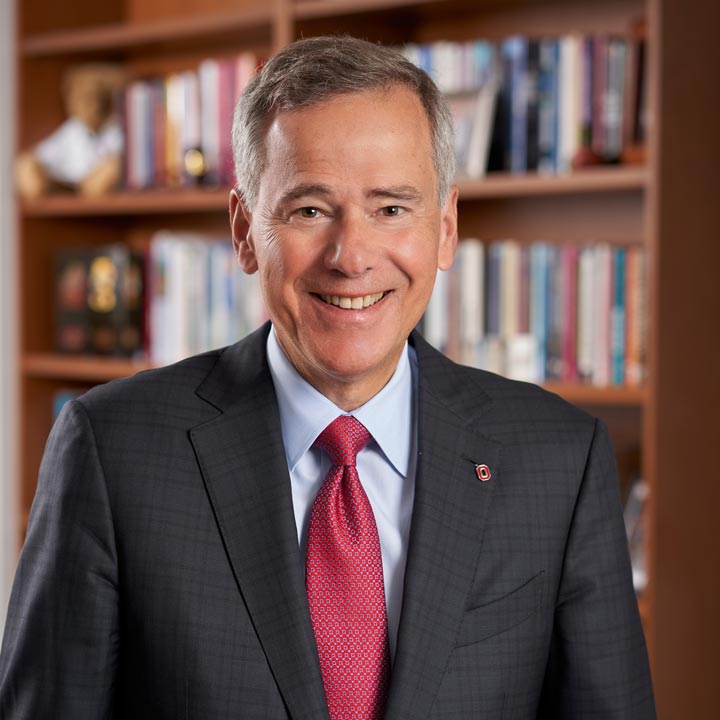 The Ohio State University College of Medicine has played an important role on the world stage this year, uncovering and developing solutions for a global pandemic. The stakes have never been higher. But The Ohio State University College of Medicine’s faculty, researchers and students have risen to the challenge, proving that there has never been a better time to be at Ohio State, where we are building the model academic health center of the future.
The Ohio State University College of Medicine has played an important role on the world stage this year, uncovering and developing solutions for a global pandemic. The stakes have never been higher. But The Ohio State University College of Medicine’s faculty, researchers and students have risen to the challenge, proving that there has never been a better time to be at Ohio State, where we are building the model academic health center of the future.
The boundless innovation on display in this annual report is one reason that Ohio State has committed its largest-ever investment in physical growth—scientific innovators often are limited not by their minds or their skills, but by the resources available.
To support a health sciences campus bursting with discovery, we are in the midst of building a new, interprofessional health sciences center that gives students from our seven health science colleges new opportunities to collaborate outside of silos, learn in state-of-the-art lab and classroom spaces, and study in environments that emphasize wellness, connecting interiors with the natural light and greenery of the outdoors.
A new, interdisciplinary research facility will house about 270,000 square feet of biomedical advances, including 8,000 square feet of core lab space, 100 wet labs for experimental research, 16,000 square feet of collaborative space and a 15,000-square-foot vivarium, along with a large seminar space, offices, conference rooms and a café.
Perhaps most exciting of all is our new inpatient hospital. Adding 26 floors and 820 beds to an already large medical campus means we can provide even more specialized, more seamlessly coordinated care to more patients. The state-of-the-art facility will also allow us to hire additional brilliant health professionals and increase collaboration across multiple disciplines.
This tower is designed to reflect the extraordinary care provided by our clinicians and staff and positions us to be a leader in the rapidly changing health care landscape by revolutionizing the way care is delivered.
Interprofessional curriculum and modern facilities are vital to training health care providers for the real-life challenges they will face in the future. At Ohio State, we are building a new and better model for academic health that can improve global well-being and decrease the financial and emotional burdens of sickness for the next century.
Harold Paz, MD, MS
Chancellor and Executive Vice President of Health Affairs, The Ohio State University
Chief Executive Officer, The Ohio State University Wexner Medical Center
